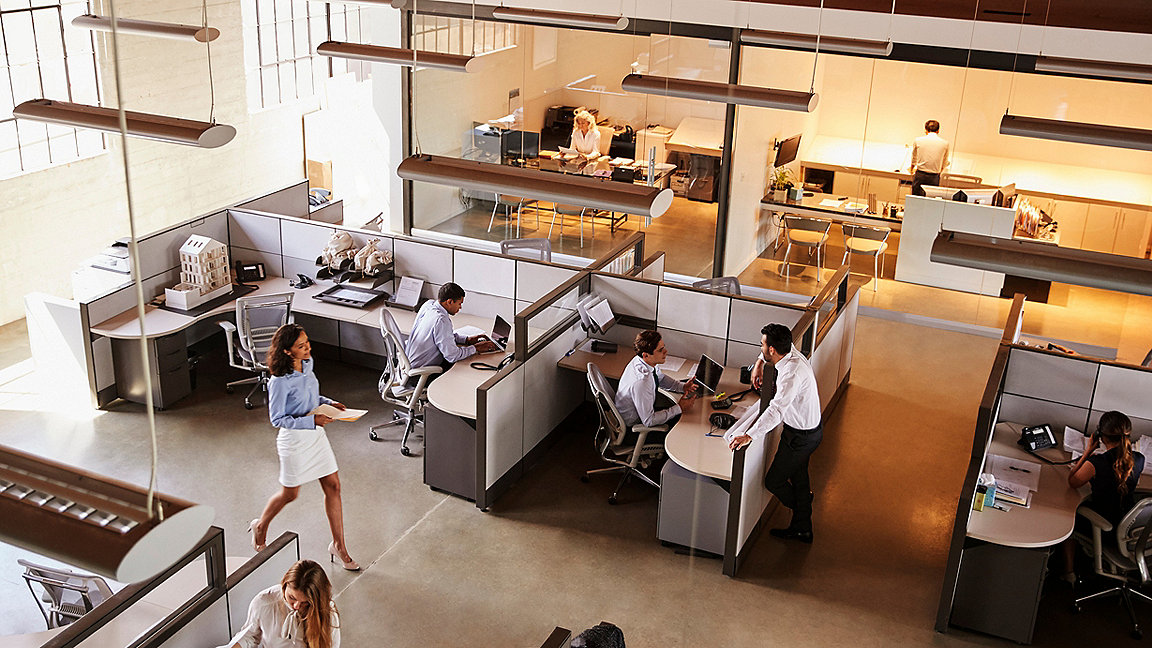
One in seven people in the UK are neurodiverse and more than 700,000 are on the autistic spectrum. Only 16% of adults diagnosed with autism are in full-time work, however. A further 77% are not but would like to be, according to the National Autistic Society.
Although human beings all tend to process sensory information in the same way, genetic and environmental factors can cause significant differences. For example, some people are more sensitive to sound, which affects concentration and overall performance. Light can also affect mood and healthy sleep patterns. Sensory sensitivity affects around 20% of the population regardless of gender.
In particular, there is significant evidence that noisy environments adversely affect the performance, health and well-being of autistic individuals. But this understanding can inform organisational culture, policies, and workplace design and inclusion strategies.
Researching workplace noise and neurodiversity
Saint-Gobain Ecophon is conducting an ongoing study involving neurodiverse workers in specialised fields to address these questions. The participants are primarily those with autistic spectrum conditions, but there are a number with sensory sensitivities.
The study aims to inform the development of new offices at the Atomic Weapons Establishment (AWE) in Aldermaston, which will accommodate 3,000 staff. Another outcome will be guidance on human-centric, inclusive design that can benefit all building users.
Three primary methodologies have been used: acoustic measurements, online questionnaires, and face-to-face feedback. The physical measurements have been taken in line with BS EN ISO 3382-3 Measurement of room acoustic parameters: open plan offices. This standard sets out specific measurement criteria for open-plan offices and looks at the spread of sound in an office space.
The spatial decay rate of speech measures how its decibel levels drop in for each doubling of distance. The standard sets no specific targets or target values for this, but there are examples.
Although the office in this study did not meet any of the example targets, these example values are rarely if ever met in UK offices. Physical measurements were instead taken to identify the relationship, if any, between quantitative and qualitative data from user survey responses and open comments.
The study devised a proprietary questionnaire combining psychological, physical and physiological factors. This asked participants to reflect on factors such as task time, control, performance and ability. The psychoacoustic questionnaire used the Berkeley Personality Lab's Big Five Personality Inventory to identify traits in the group. We also used the Sensory Matrix questionnaire to help identify specific noise sensitivities.
Researchers compared the personality traits from the Big Five inventory to sensory profiles from the Sensory Matrix. This enabled understanding of both stimulation from sensory organs and perception. The latter combines sensory information with knowledge and memory to form conscious thought. The researchers then held face-to-face meetings with participants to discuss the results and obtain specific insights.
Findings and further work
Significant findings include from the research so far include:
-
86% of respondents have auditory sensitivities
-
for 30%, only enclosed, cellular offices are acceptable for primary or focused work; others prefer a combination of private offices and a small collaboration area
-
loud noise has a significant effect on self-perceived performance at –10%, compared with a benchmark of –6%, measured using the Building Use Studies methodology and benchmarked to the Saint-Gobain Ecophon psychoacoustic database
-
uniform design is unlikely to improve health, well-being and productivity.
Many participants said they would favour a private, enclosed office or shared quiet rooms rather than open plan or cubicles. But they also recognised that being part of a team provides support, and most were amenable to small, shared open spaces so as not to feel isolated.
Among participants' suggestions were use of better sound absorbing materials on the cubicle walls and ceilings. They also requested better acoustic zoning, and guidance on acoustic etiquette to address louder, irrelevant speech disturbances.
The next phase of the study will look at whether choices such as cellular offices in open-plan environments can improve workplace satisfaction for most staff, as well as providing a more productive setting for neurodiverse individuals.
'Among participants' suggestions were use of better sound absorbing materials on the cubicle walls and ceilings'
Paige Hodsman is the concept developer for office environments in the UK and Ireland for Saint-Gobain Ecophon
Contact Paige: Email
Related competencies include: Performance management, Strategic real estate consultancy, Workspace strategy
